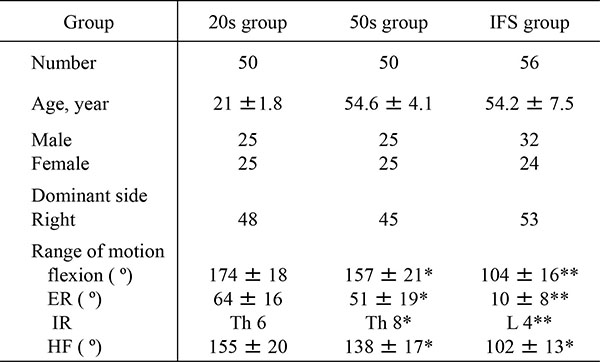 |
There were no significant differences in the number of subjects, gender, and the dominant arm except age among the 3 groups. Each range of motion of the shoulder joint in the 20s group showed statistical significance compared to those in the 50s group, and there were significant differences between ROMs in the 50s group and the idiopathic frozen shoulder group.
20s, normal twenties; 50s, normal fifties; IFS, idiopathic frozen shoulder; ER, external rotation; IR, internal rotation; Th, thoracic spine; L, lumber spine; HF, horizontal flexion; * p < 0.05; ** p < 0.01.